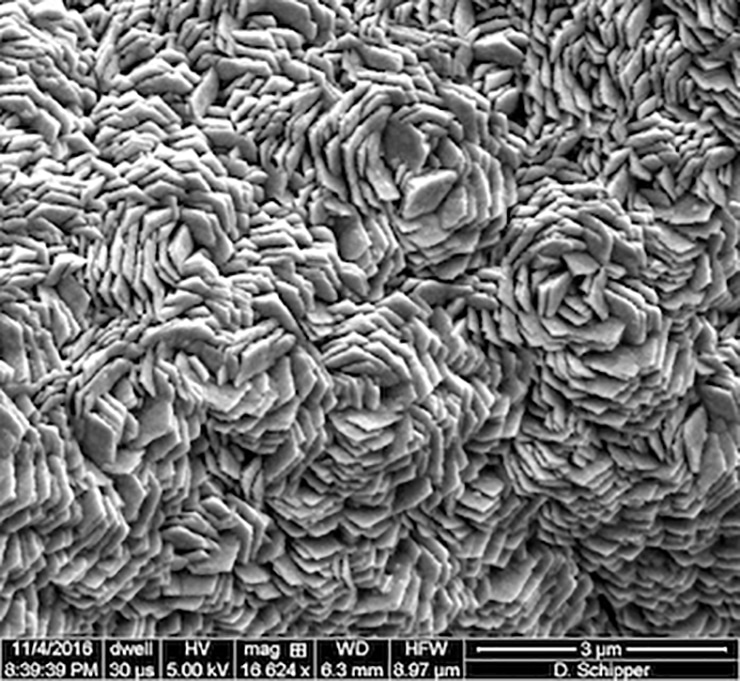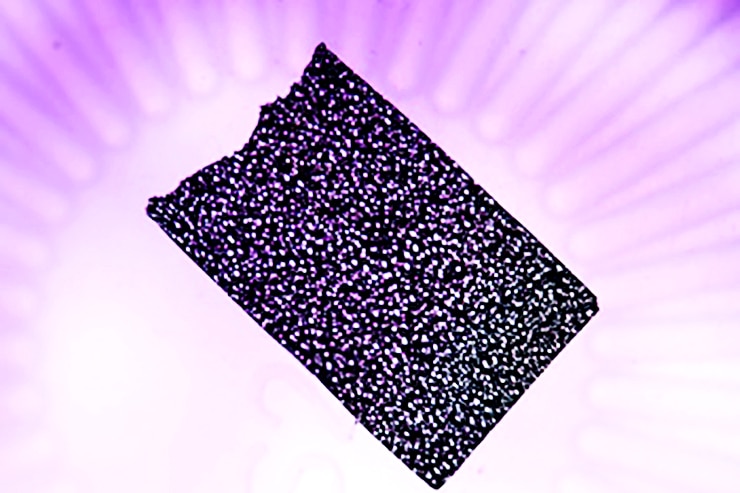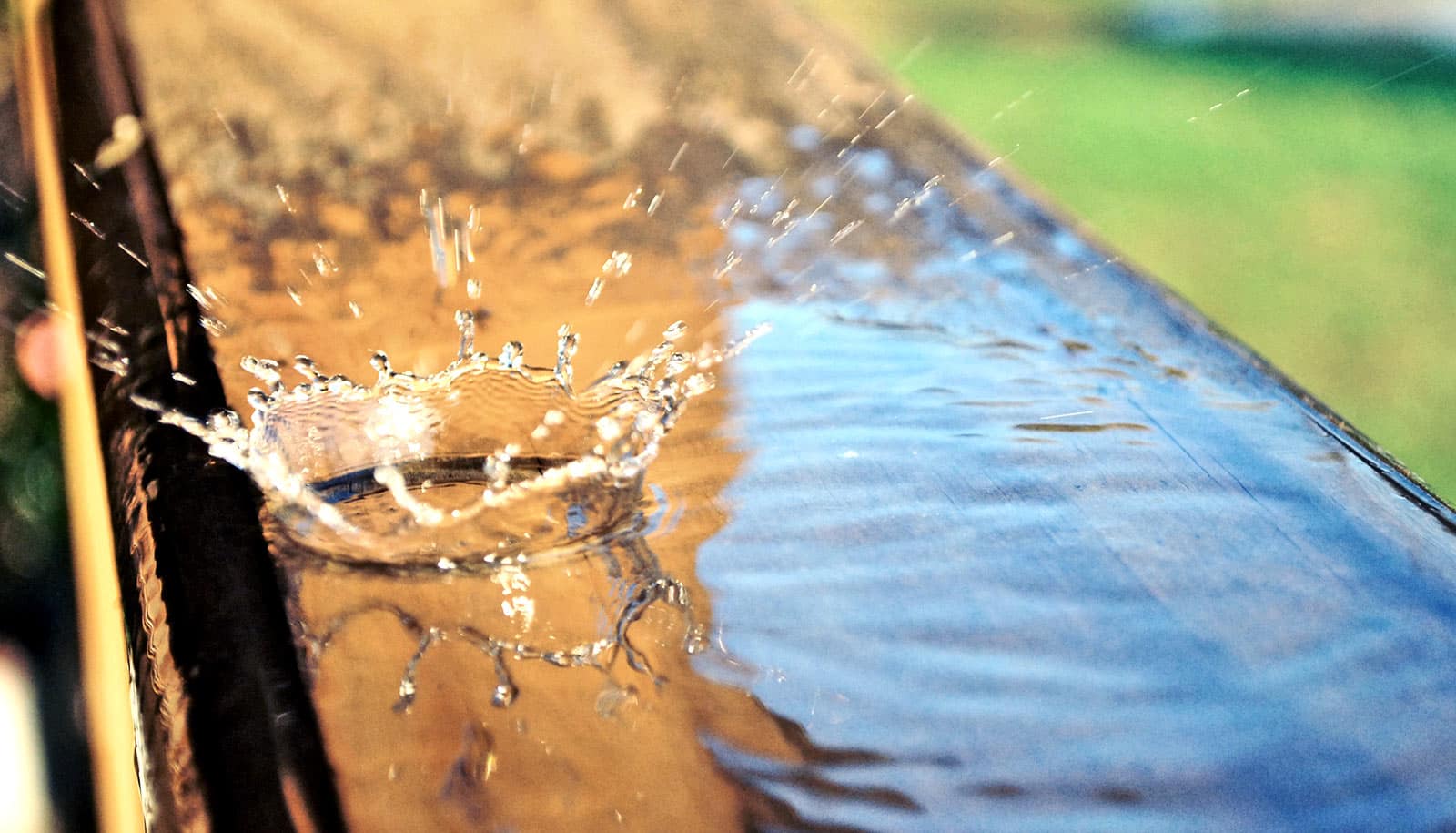Scientists have created a single catalyst that could simplify the process of splitting water into hydrogen and oxygen to produce clean energy.
The electrolytic film is a three-layer structure of nickel, graphene, and a compound of iron, manganese, and phosphorus. The foamy nickel gives the film a large surface, the conductive graphene protects the nickel from degrading and the metal phosphide carries out the reaction.
The team of scientists developed the film to overcome barriers that usually make a catalyst good for producing either oxygen or hydrogen, but not both simultaneously.

“Regular metals sometimes oxidize during catalysis,” says Kenton Whitmire, a professor of chemistry at Rice University. “Normally, a hydrogen evolution reaction is done in acid and an oxygen evolution reaction is done in base. We have one material that is stable whether it’s in an acidic or basic solution.”
The discovery builds upon the researchers’ creation of a simple oxygen-evolution catalyst revealed earlier this year. In that work, the team grew a catalyst directly on a semiconducting nanorod array that turned sunlight into energy for solar water splitting.
Electrocatalysis requires two catalysts, a cathode and an anode. When placed in water and charged, hydrogen will form at one electrode and oxygen at the other, and these gases are captured. But the process generally requires costly metals to operate as efficiently as the new catalyst.
“The standard for hydrogen evolution is platinum,” Whitmire says. “We’re using Earth-abundant materials—iron, manganese, and phosphorus—as opposed to noble metals that are much more expensive.”

The new catalyst also requires less energy, Whitmire says. “If you want to make hydrogen and oxygen, you have to put in energy, and the more you put in, the less commercially viable it is,” he says.
“You want to do it at the minimum amount of energy possible. That’s a benefit of our material: The overpotential (the amount of energy required to trigger electrocatalysis) is small, and quite competitive with other materials. The lower you can get it, the closer you come to making it as efficient as possible for water splitting,” Whitmire explains.
Graphene, the atom-thick form of carbon, is key to protecting the underlying nickel. One to three layers of graphene are formed on the nickel foam in a chemical vapor deposition (CVD) furnace, and the iron, manganese, and phosphorus are added on top of that, also via CVD and from a single precursor.
Solar device shatters records for splitting water
Tests comparing nickel foam and the phosphide both with and without graphene in the middle and found the conductive graphene lowered charge-transfer resistance for both hydrogen and oxygen reactions.
“Nickel is one of the best catalysts to make graphene,” says co-lead author Desmond Schipper, a graduate student from Rice. “Essentially, we’re using the nickel to help improve the nickel.” He says the manganese adds a level of protection as well.
Whitmire says the material is scalable and should find use in industries that produce hydrogen and oxygen or by solar- and wind-powered facilities that can use electrocatalysis to store off-peak energy.
It may also be adapted to produce other advanced materials. “Our method could be widely applicable to a large number of metal phosphide materials for catalysts—not just for water splitting, but for a range of things,” he says.
“A critical factor is that we’re able to make phase-pure materials with different compositions. Currently, people have very little control over the phase they get on a surface, and in many cases they get a mixture. When that happens, they don’t know which phase is actually responsible for the catalysis. With our process, they can know.”
Cheap catalyst coaxes hydrogen from the lawn
The material is the subject of a paper in Nano Energy.
Additional researchers who contributed to the work are from the University of Houston and the University of Electronic Science and Technology of China, Chengdu. Whitmire is a professor of chemistry and associate dean of the Wiess School of Natural Sciences at Rice.
Rice University, the National Science Foundation (NSF), and the Robert A. Welch Foundation supported the research. The University of Houston uHPC cluster, the NSF-supported Extreme Science and Engineering Discovery Environment and the Department of Energy Office of Science National Energy Research Scientific Computing Center provided computing resources.
Source: Rice University



